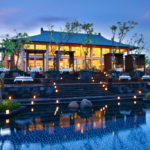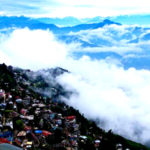The unique and varied culinary cuisines of Bangladesh are adding impetus to tourism and is attracting foreign tourists to the nation
Traditional Bangladeshi cuisine is much acclaimed across Europe and the world. Among the many world famous chefs, Bangladeshi chefs have carved a niche for themselves by virtue of their qualities and skills. The traditional food has reached foreign shores. Therefore, we can proudly claim that Bangladeshi traditional cuisines are among the world’s finest. Since time-immemorial, this part of Bengal has attracted travellers from far and wide because of the variation in style and instant availability. In fact, this Bengal though termed as the hinterland is extremely fertile and farmers have traditionally enjoyed a good harvest most of the time. The moderate climatic conditions and a good geographical location have helped this part of Asia considerably and cultivation of various types of crops and spices has been made possible. This has helped in the transformation and diversification of traditional Bangladeshi cuisine to a great extent.
Bangladesh is home to several serpentine rivers that help us to have more fishes in our waters. Therefore, Bangladesh is often associated with the phrase ‘Bengalis are of rice and fish’. Rice and fish, especially sweet-water fish, are our staple food. Fish-based food is mainly found in Bangladesh. In addition to this, the six-seasons of the country help us create different different varieties of food as per the weather. In winter, we can, therefore, see more than hundred varieties of pitha (traditional cakes).
Among the many other traditional food items available in Bangladesh, few notable are Khichidi (Hotchpotch), Biryani, Tehari, Kacchi Biryani, Polau, Korma, Kala Bhuna, Jorda, Firni, Sirni, Borhani, Kebab (shikh, reshmi, shashlik, tikka and shami), Mughali, Jhal fri, Deem Khichidi, Chingri Khichidi, Ilish Khichidi, Lassi, Dal puri, Alu paratha and many kinds of Bhortas (mashes) like shutki (dry fish), Potato, Brinjal, Sweet potato, Okra, Papaya and Tomato etc.). Bangladesh is also famous for its various egg-based dishes.
Major fish dishes include hilsha (our national fish), pabda (butterfish), rui (rohu), pangash (catfish), chital (clown knife fish), magur (walking catfish), bhetki (barramundi) and tilapia. Meat consumption includes beef, lamb, venison, chicken, duck, squab and koel. Vegetable dishes, mashed (bhorta), boiled sabji (vegetables), or leafy vegetables, are widely served. Seafood such as lobsters and shrimps are also often found.
In addition, the sweet dishes widely popular in the country include doi (yoghurt), swandesh, rosogolla, chamcham, bundia, kalojam, rajbhog etc.). For evening snacks, we have nan, roti, parota, bakhorkhani, muri, payesh, moa, laddu etc.
Usually, almost all the sublime Bangladeshi dishes reveal strong aromatic flavours. A variety of spices and herbs, along with mustard oil or soybean oil and ghee, are used in Bangladeshi cooking. Dal (lentil) is the second-most important staple food, which is served with rice/paratha/luchi.
According to the UNWTO, gastronomy, is the essence of culture and a major element of intangible heritage worldwide. It attracts tourists to hitherto untapped destinations. The interrelation between gastronomy and tourism provide a vehicle for the transmission of culture, which in turn, if properly managed, enhances local economic development, sustainable practices and food experiences. Hence, gastronomy tourism, helps to brand and market destinations, as well as assists in maintaining and preserving local tradition and diversity, harnessing and rewarding authenticity.
Recently, the UNWTO experts presented current research and shed light on the latest trends. They successfully presented models and case studies on four main areas, each addressing a specific session. These included the challenges of food tourism, best practices, professional training and innovative product development. Bangladesh, therefore, has the potential to be an ideal food destination for connoisseurs of food.
Historically, ancient Bengali diets included rice, fish, honey, dairy and vegetables. The region was an administrative and commercial bastion of South Asia during early Hindu and Buddhist kingdoms, and later Muslim Sultanates. Mughal cuisine developed in Bengal after the establishment of the province of Mughal Bengal in 1576, as part of the Mughal Empire. The historic city of Dhaka played an important role in influencing Bengali food with Mughal elements. The British Empire ruled the region for nearly two hundred years between the 18th and 20th centuries, during which the Bengal Renaissance shaped the emergence of modern Bengali cuisine. During the British rule, the influence of Kolkata was prominent in Bengali dishes. In the southeast, Arakan cuisine from Burma influenced dishes in Chittagong, particularly dried fish.
History shaped the present Bengali cuisine. These unique cuisines provided an added impetus to tourism and attracted foreign tourists who now regularly come to Bangladesh to enjoy our cuisine. Bangladeshi cuisines are hygienic and good for health, except some of the spicy ones. As the European tourists are usually inclined to taste the spicy food, we can promote the traditional cuisine of Bangladesh in the European countries. We can also promote Bangladesh as an important gastronomy destination worldwide.
The author is Head of PR, Bangladesh Parjatan Corporation (BPC)





















